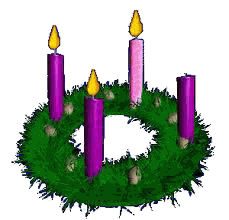The House Without a Christmas Tree, Gail Rock
"Do you think Dad might do it this year? Might buy me a tree?"
Ten-year-old Addie Mills has a comfortable life in small-town Nebraska in the late 1940s. Her mother having died when she was a baby, Addie has been brought up by her serious, taciturn father and her offbeat but caring grandmother. She's a good scholar, artistic, and articulate, but somehow no matter what she does, it never quite pleases her father, who has refused for her entire life to have a tree at Christmas. Once again, Addie pleads her case, but is rebuffed—but a contest at school brings the situation to a head.
If I've seen the television special, you may ask, why read the book? Well, because it says so much more—about Addie and Carla Mae's friendship (and Carla Mae's family), about Addie's conflicted feelings about Billy Wild, and, most of all, about Grandma; we learn much more about Grandma's eccentricities than were intimated by the special (the breakfast scene where she drops the pancake, for instance), so you can understand more fully why Addie's classmates think Mrs. Mills is a little peculiar. Addie's narrative rings true to the opening and closing voiceovers heard in the specials and lends a special note to the tale.
And frankly, because this is such a good tale it deserves to be told again. :-)
The Tuckers: The Cottage Holiday, Jo Mendel
"Penny Tucker stood on her knees among the cushions of the window seat and pushed her nose against the cold glass. With each fresh gust of wind, hard little white balls shot out of the dark and hit the windows. Across the street every house twinkled with ropes of Christmas lights...[t]onight the PTA was holding a special meeting to celebrate the beginning of Christmas vacation. All of the Tuckers...were to take part. That is, all but...seven-year-old Penny. She had been kept in with a virus infection Nobody had asked her to be on the program."
Children's series books have proliferated since the late 1800s; this was one that appealed to both boys and girls: the stories of five children, their parents and grandparents, plus one big wooly dog and a black cat. The kids are a rambunctious, but generally-well-behaved bunch, but the youngest girl is not always well and in this Christmas story, she begins to fret that she is becoming lost in her family of achievers. Her oldest sister can bake, her older brother is a builder and his twin sister is musical, and her younger brother is practical—but what can frail Penny do? She finds out when she wishes the family can spend Christmas at their lake cottage: it's a week of fun, friends, festivities, and even suspense, when she and a friend discover an abandoned baby in a trailer.
While written in simple words, Penny's plight is still touching and will appeal to anyone who feels left out by life. The warm events in the cottage and at a nearby farm will enfold you in its Christmas arms; you'll wish you were out, carefree, playing games in the snow and joining the kids in finding a Christmas tree. But it's Penny's search for a place for herself that really makes this book special and sets it above all the other books in the series.
"Wonderingly she thought, 'I've found something I didn't know I was hunting. I've found Christmas.'" In reading this, may you, as well.











